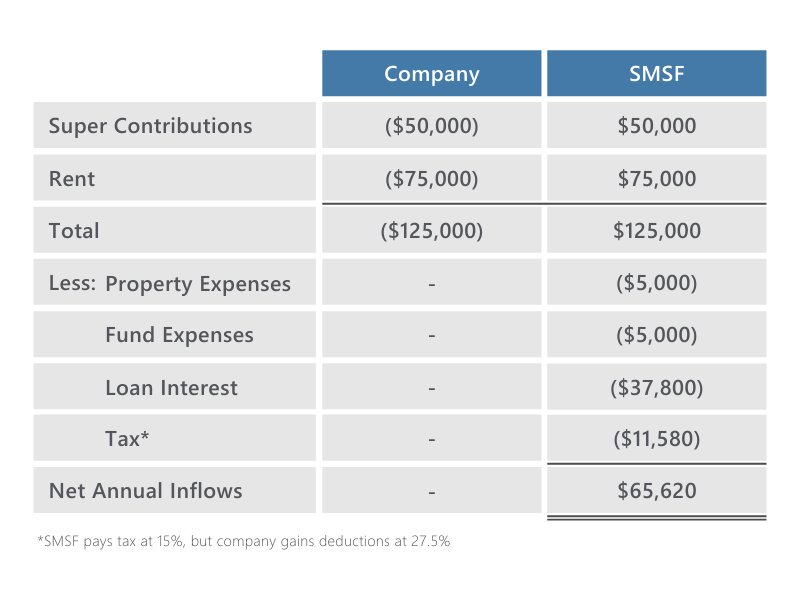You run a successful business, you are already contributing the maximum deductible amount into your superannuation, and each year, you pay a significant amount of rent for your business premises to your landlord.
Wouldn’t it be nice if you could buy your own business premises and pay that rent to yourself?
Current legislation limits how much we can contribute to superannuation, with the current concessional (pre-tax) contribution cap at $25,000 per year and the current non-concessional (after-tax) contribution cap at $100,000 per year. This can make it challenging to save enough within your superannuation for your retirement, let alone to purchase a business premises. However, if you are running your own business, there may be another way.
It is worthwhile reviewing your profit and loss statement and calculating the amount of rent being paid each year to your landlord. Then, calculate your superannuation balance after five or ten years should you pay that amount into your own fund.
Australian superannuation law severely restricts loans, leases, and investments between super funds and their “related parties”. However, one of the main exceptions to these rules are leases of “business real property” made on arm’s length terms between members’ superannuation funds and their businesses.
So, while your superannuation fund can’t buy a house for you to live in, it can buy an office, workshop, warehouse, or other business premises for you to work from.
Additionally, using a “limited recourse borrowing arrangement” (or LRBA), a superannuation fund may be able to borrow to buy those premises.
Of course, such a strategy will not suit everyone; however, for those where the maximum contributions are being made each year, the business has strong, consistent cash flows, and individual circumstances allow, it may certainly be worth considering.
Case Study
To illustrate how this works in practice, consider the following example.
Bill and Betty own a small business. They contribute $25,000 each to their superannuation fund each year, but have only recently reached the point of being able to do. As such, they currently have approximately $200,000 each in super.
They presently lease 200 m2 of space for their business at $250 per month, for a total gross rent of $50,000 per year. Their business is expanding and ideally, they would like an additional 50 m2 to allow for further growth.
The couple identify a suitable premises for sale in an area where average rents are $300 per month. While this would mean an increase in rent to $75,000 per year (250 m2 x $300), they discuss it with their adviser and calculate that the business can afford it and their individual circumstances allow it.
They decide to undertake the purchase using an LRBA via their self-managed superannuation fund (SMSF). After consulting with a lending adviser, they receive terms which would allow them to borrow up to 70% of the purchase price.
Next, they seek out an SMSF specialist who assists them with putting into place the appropriate legal structures for an LRBA.
Once everything is in order, they offer $900,000 for the premises, which is accepted. They borrow 70%, or $630,000 at 6% interest, and pay the remaining amount from their existing superannuation fund, leaving their fund with more than $100,000 in liquid assets.
The following table illustrates how Bill and Betty’s position has now changed:

Before, Bill and Betty’s business was paying the landlord $75,000 in rent and they were saving $42,500 (net of tax) in superannuation.
Now, their SMSF has net inflows of $65,620 per year which can be used to reduce the loan balance and build a valuable asset.
How we can help
If you would like to explore whether this strategy aligns with your current circumstances and goals, or would like to discuss your SMSF strategy in broader terms, please get in touch.
Disclaimer: Any advice included in this article is general and has been prepared without taking into account your objectives, financial situation or needs. As such, you should consider its appropriateness having regard to these factors before acting on it. Any tax information refers to current laws, is not based on your unique circumstances and should not be relied on as tax advice. Before you make any decision about whether to acquire a certain financial product, you should obtain and read the relevant product disclosure statement.
